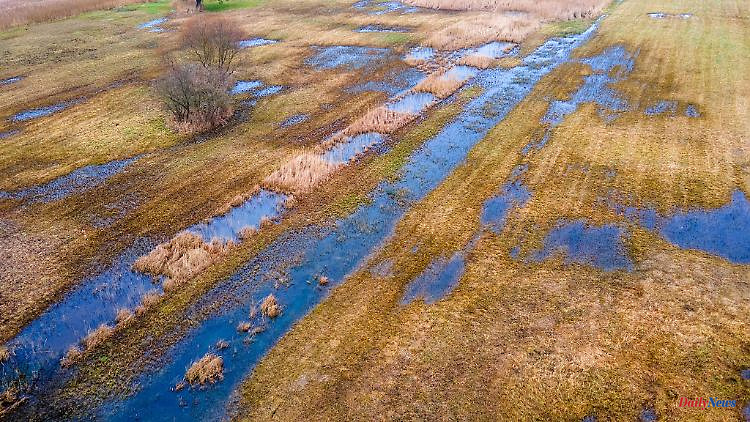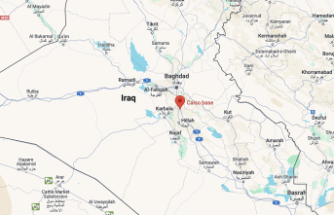Germany's north-eastern district emits most of the greenhouse gas from dry moors. It's not just about the size of the district. Experts also see economic opportunities in rewetting.
Greifswald (dpa/mv) - According to the Federal Environment Agency, there is no other district in Germany where drained moors emit more greenhouse gases than in Western Pomerania-Greifswald. According to the moor expert Jan Peters, this also has something to do with the high percentage of moor in the district. The emissions from the district's moors are comparable to those of the coal-fired power plant in Rostock, said the managing director of the Succow Foundation in Greifswald, which works internationally for moor and nature conservation.
Bogs bind a lot of carbon dioxide (CO2) - a greenhouse gas. If they are drained, for example for agricultural use, the dry peat breaks down and releases the CO2. According to the information, drained moors in Western Pomerania-Greifswald emitted more than two million tons of carbon dioxide equivalents in 2020.
The high moor density in MV makes the wetlands an important factor when it comes to achieving climate protection goals by reducing greenhouse gas emissions. "Mecklenburg-West Pomerania is the most moor-rich federal state in Germany after Lower Saxony," explained Peters. According to him, counties in north-west Germany are also far ahead in terms of emissions relative to area.
The top position of Vorpommern-Greifswald is also due to the size of the districts in the north-east. "Because the districts here in Mecklenburg-Western Pomerania are quite large."
In Mecklenburg-Western Pomerania, moors are the largest single source of greenhouse gases, said Peters. "Far ahead of traffic, industry, energy." At the beginning of the week, the national parks and nature parks in Mecklenburg-Western Pomerania announced moors as their annual theme - because of their importance for climate protection, but also as a habitat.
The data on greenhouse gas emissions can also be found in the "Mooratlas 2023", the Heinrich Böll Foundation, the Bund für Umwelt und Naturschutz Deutschland and the Succow Foundation, which is to be published next week.
Peters welcomed the fact that State Environment Minister Till Backhaus (SPD) had also recognized the importance of moors for climate protection. According to his own statement, he wants to promote rewetting. However, Peters criticized, for example, that the Ministry of the Environment has not yet had a permanent contact point for the topic. In addition, the country is not making full use of its leeway to avoid subsidizing agriculture on drained land.
Peters sees economic potential for the region in the possible use of wet areas, for example for harvesting reeds. A large part of the reeds on North German roofs come from abroad, for example from China or Kazakhstan. In addition, the reed can also be processed into fuel and other building materials.
However, there is still a "chicken and egg problem". Farmers would switch to such products if they could sell them permanently at a good price. Recycling companies, on the other hand, saw potential, but so far they have lacked the raw material. That is why we are currently trying to bring the actors together better.












